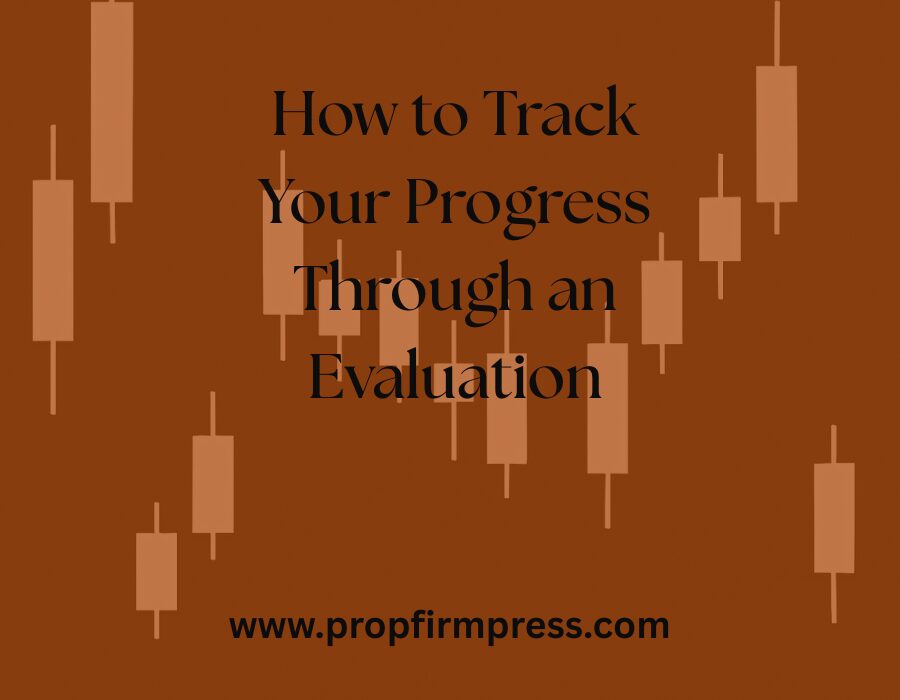How to Track Your Progress Through an Evaluation
Tracking your progress during a prop firm evaluation is not just useful — it’s absolutely essential. Without systematic tracking, traders can easily lose sight of their current standing, leading to missed targets, rule violations, and ultimately, failure. Understanding where you are in your evaluation, how your risk management is holding, and whether your trading approach is effective will empower you to make timely adjustments, manage stress, and improve your odds of success.
Why Progress Tracking Matters
Prop firm evaluations typically involve complex rules, including profit targets, maximum drawdowns, trading day minimums, and position restrictions. Your evaluation dashboard provides quantitative metrics like your current profit/loss, drawdown, and how many trading days you have completed. However, relying solely on these numbers can miss the qualitative factors — emotional states, trade rationale, or patterns of errors — which are equally critical.
Use the Prop Firm Dashboard Effectively
Every prop firm provides some kind of online dashboard where you can view your live account statistics. Make it a habit to check this multiple times daily — ideally at pre-defined points, such as before trading, mid-session, and after market close. Pay attention to:
- Profit so far: How close are you to the target? Are you making steady progress?
- Drawdown: Are you approaching daily or overall loss limits? Early detection helps avoid disqualification.
- Number of trading days: Have you met the minimum? If not, plan accordingly.
- Open positions: Manage your trades actively to prevent overnight risk if disallowed.
Many firms allow you to export your trade data for detailed analysis, which can be invaluable for deeper insights.
Maintain a Detailed Trading Journal
A trading journal is one of the most powerful tools you can use. Document every trade, including entry and exit prices, rationale, setup type, outcome, and your emotional state. Over time, reviewing your journal reveals:
- Consistent errors in execution or judgment.
- Which setups produce the best results.
- How your emotions influence trading decisions.
- Areas where your plan needs refinement.
Many professional traders credit journaling as a major factor in their improvement and discipline.
Set Daily and Weekly Goals
The overall profit target can be intimidating, but breaking it down into manageable chunks makes it achievable. If your challenge requires an 8% profit over 30 days, aim for roughly 0.27% per day. On days with no valid setups, pause and protect your account rather than forcing trades.
Regularly review whether you are hitting these interim goals. Falling behind early requires a tactical decision: ramp up cautiously or accept a reset.
Monitor Emotional and Physical Wellbeing
Your mental state profoundly impacts trading performance. Fatigue, stress, or overconfidence can lead to poor decisions. Track your emotional and physical condition alongside your trading statistics. Consider using apps or notes to log mood, sleep quality, and stress levels.
Identifying patterns — like poorer performance after late nights or stressful events — lets you schedule your best trading sessions accordingly.
Review Compliance Frequently
Violating any prop firm rule, even accidentally, can end your challenge abruptly. Monitor compliance with:
- Maximum daily loss limits.
- Position size and trade count restrictions.
- Trading instruments and times allowed.
- News trading bans if applicable.
Set up alerts, timers, or stop-loss triggers that can help enforce these limits automatically.
Regular Review and Adaptation
Progress tracking is not static. Use your dashboard, journal, and emotional logs weekly to review what’s working and what’s not. Adjust your trading plan accordingly — whether that means tightening risk, focusing on higher-probability setups, or improving discipline.
Tools and Apps for Tracking
Leverage technology to streamline tracking:
- Spreadsheet templates for trade journals.
- Mobile apps for mood and performance logging.
- Prop firm dashboards and alerts.
- Backtesting software to validate strategy tweaks.
Final Thoughts
Effective progress tracking blends quantitative metrics with qualitative self-awareness. By consistently monitoring your performance and mindset, you can make smarter decisions, avoid costly mistakes, and improve your chances of passing your prop firm evaluation on the first try. Commit to regular review, and view each session as a learning opportunity — this mindset is as vital as any technical skill.
